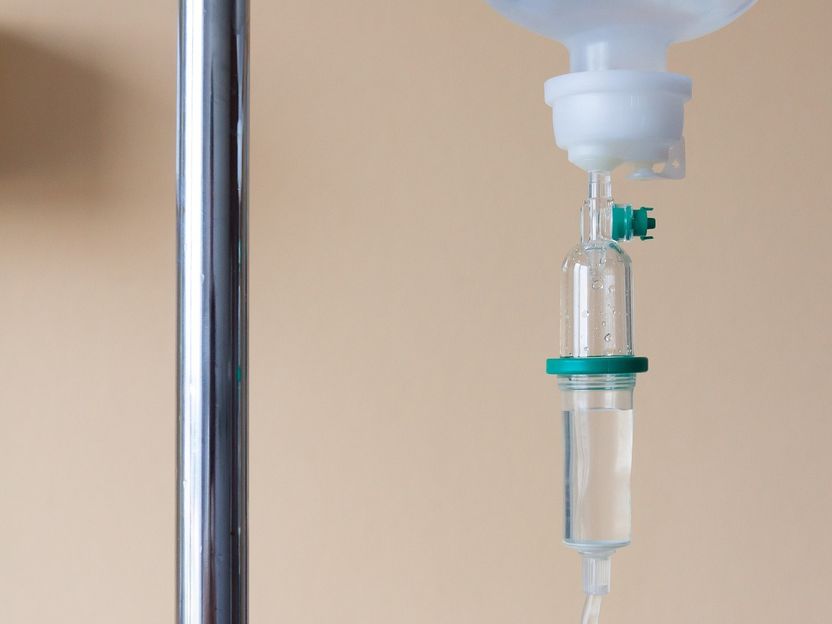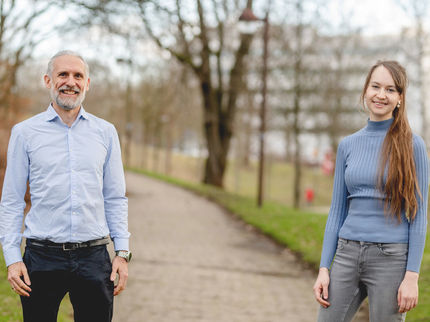Improving the lifetime of bioelectrodes for solar energy conversion
The key to a long life for bioelectrodes lies in an oxygen-free environment.
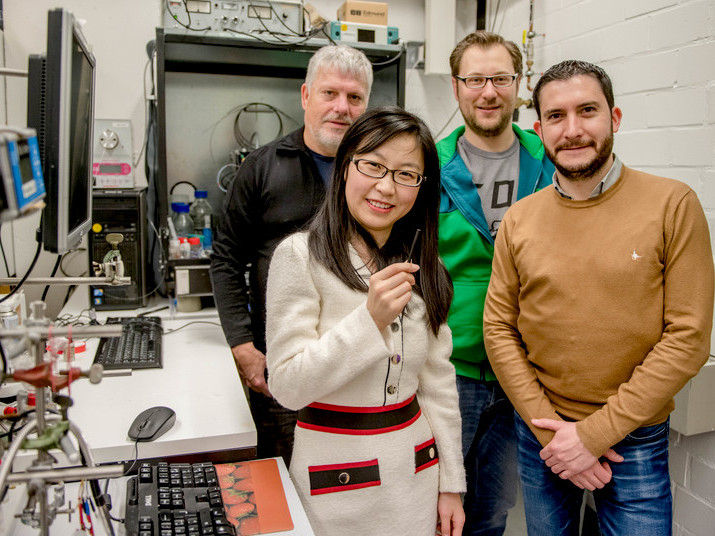
Wolfgang Schuhmann, Fangyuan Zhao, Adrian Ruff and Felipe Conzuelo (from the left) work on long-lasting bioelectrodes.
© RUB, Marquard
The use of proteins involved in the photosynthetic process enables the development of affordable and efficient devices for energy conversion. However, although proteins such as photosystem I are robust in nature, the use of isolated protein complexes incorporated in semi-artificial electrodes is associated with a considerably short long-term stability. In consequence, the technological application of these kind of biodevices is still limited. Researchers at Ruhr-Universität Bochum (RUB) showed that a careful operation of the photosystem-based bioelectrode under the exclusion of oxygen is the key for achieving high stability.
The team involving Dr. Fangyuan Zhao, Dr. Adrian Ruff, Dr. Felipe Conzuelo, and Professor Wolfgang Schuhmann from the Chair of Analytical Chemistry and Center for Electrochemical Sciences, together with Professor Matthias Rögner from the Bochum Chair of Plant Biochemistry describes the results in the “Journal of the American Chemical Society”.
Using green energy
Efficiently producing energy for a more sustainable society is nowadays a continuous challenge. Therefore, it is important not only to understand but also to overcome the processes that currently limit the lifetime of technologies for green and renewable energy conversion. Among different promising techniques, the use of protein complexes involved in the photosynthetic process for the fabrication of semi-artificial devices is of particular interest due to their high efficiency and large natural availability.
Oxygen is to blame
The scientists have already shown in a previous study that under operation of the bioelectrode reactive molecules are formed that damage photosystem I and are responsible for a limited lifetime of the biodevice. These reactive species are associated to the use of oxygen as final electron acceptor. Therefore, the design of bioelectrodes operating in an oxygen-free environment was suggested.
An important step towards the application
Now, operation of the bioelectrode under the exclusion of oxygen has proven to effectively increase the lifetime of the device for a substantial period in comparison with the results obtained in the presence of ambient oxygen. As the authors explain, the obtained results are an important step towards the efficient development and possible application of photobiodevices for energy conversion.
Original publication
Other news from the department science

Get the life science industry in your inbox
By submitting this form you agree that LUMITOS AG will send you the newsletter(s) selected above by email. Your data will not be passed on to third parties. Your data will be stored and processed in accordance with our data protection regulations. LUMITOS may contact you by email for the purpose of advertising or market and opinion surveys. You can revoke your consent at any time without giving reasons to LUMITOS AG, Ernst-Augustin-Str. 2, 12489 Berlin, Germany or by e-mail at revoke@lumitos.com with effect for the future. In addition, each email contains a link to unsubscribe from the corresponding newsletter.
Most read news
More news from our other portals
Last viewed contents
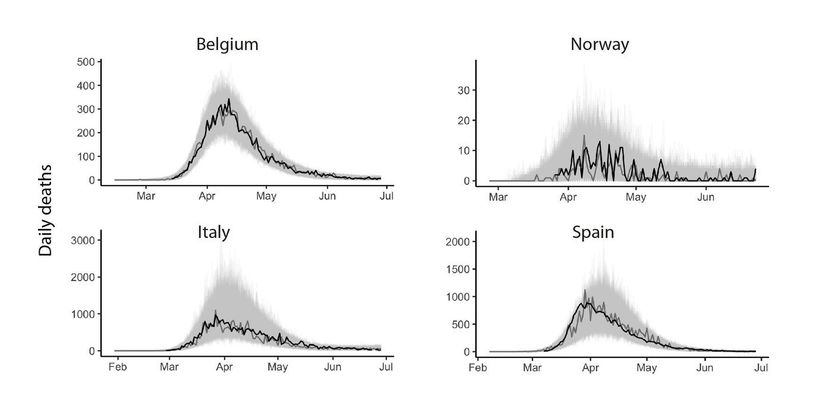
Flu may increase the spread of Covid-19 - Researchers show in mathematical model that flu may facilitate the spread of Covid-19
MHH Researchers scrutinize EC Regulation - 500.000 Euros of funding for an assessment of regulatory impact on Advanced Therapies
Roche to acquire Kapa Biosystems
Powering off TB: New electron transport gene is a potential drug target
Aortic aneurysm treatable with asthma drugs
TSRI scientists take step toward mapping how the brain stores memories
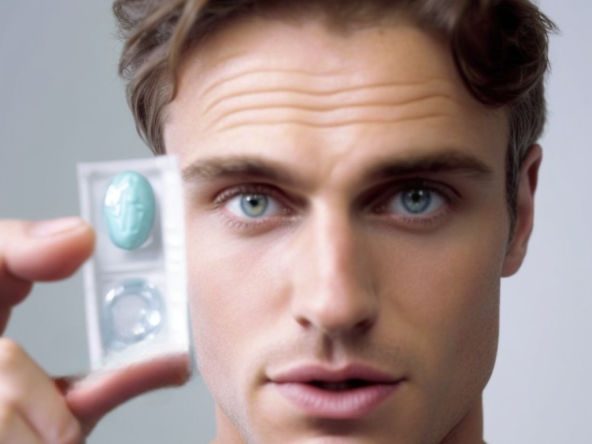
New study on the male contraceptive pill - Researchers launch contraceptive startup
Crucell Gains Approval and Moves to Recruitment for West Nile Vaccine Phase I Clinical Study
